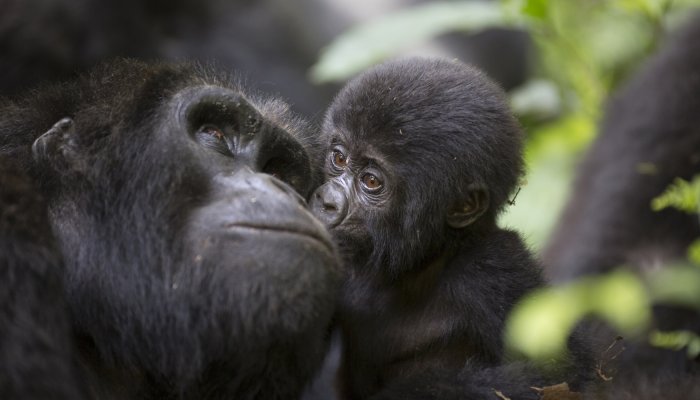Species: Tremarctos ornatus
Trips: Peru Unbound Signature Tour
Likelihood of sightings: High
The spectacled bear (or Andean bear) is the only bear species that is native to South America and the last remaining short-faced bear in the world. They live within the dense Andean jungles of Venezuela, Colombia, Ecuador, Peru, Bolivia and Argentina, although habitat loss, hunting and poaching have seen them listed as Vulnerable by the International Union for Conservation of Nature.
Spectacled bears are distinguished by their black, brown or sometimes even reddish shaggy fur and white or yellow rings that encircle their eyes (hence the name “spectacled”). But not all individuals display such clear “glasses”, with some having lines that don’t fully encircle the eyes and others lacking these markings altogether, making it easy to distinguish individuals.
They are one of the smallest members of the Ursidae bear family, with females weighing no more than 180 pounds and males up to around 440 pounds. From head to tail, they normally range from around 50 to 80 inches in length, with a more rounded face and short, broad snout when compared to other bear species.
Spectacled bears are incredibly shy, preferring isolated tracts of high-altitude cloud forests on the Andean slopes. The wetter the conditions, the more food available for the bears, although they are known to descend to find food and have been spotted in low altitude rainforests, steppe landscapes and even coastal deserts!
They only socialize with other bears during the mating season, with females giving birth to one or two cubs. Newborns will only be mobile after a month and cubs stay with their mother for up to eight months. If you’re lucky, you might even see newborns hitching a ride on their mom’s back!
Spectacled bears are predominantly vegetarian, eating cacti, fruits and berries, as well as honey. But they will occasionally supplement their diet with small rodents, birds and insects, making them South America’s largest carnivores. They are talented climbers and will position themselves comfortably in trees waiting for fruit to ripen, sometimes building a platform to rest and store food. Their jaws are strong and wide, with flat molars that can chew through bark with ease.
Spectacled bears are not territorial or aggressive and will normally react in a fairly docile, albeit cautious, manner if they encounter humans. Mothers, however, are protective of their young and have been known to attack if threatened. The only reported human death by a spectacled bear was after it had been shot while being hunted.
Trophy hunting of spectacled bears was popular in the 19th century and superstitious beliefs have led to the trade in bear parts. But the biggest threat to their survival is extensive logging and farming, with only 5% of their original Andean cloud forest habitat remaining. When their natural resources are diminished, spectacled bears have been known to raid crops or attack livestock, leading to conflicts with farmers that often result in poaching.
known to attack if threatened. The only reported human death by a spectacled bear was after it had been shot while being hunted.
Trophy hunting of spectacled bears was popular in the 19th century and superstitious beliefs have led to the trade in bear parts. But the biggest threat to their survival is extensive logging and farming, with only 5% of their original Andean cloud forest habitat remaining. When their natural resources are diminished, spectacled bears have been known to raid crops or attack livestock, leading to conflicts with farmers that often result in poaching.




